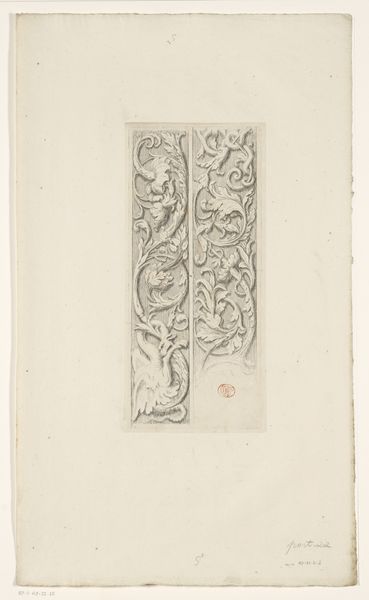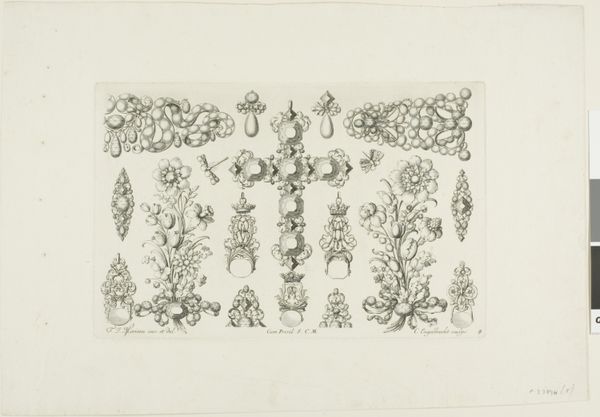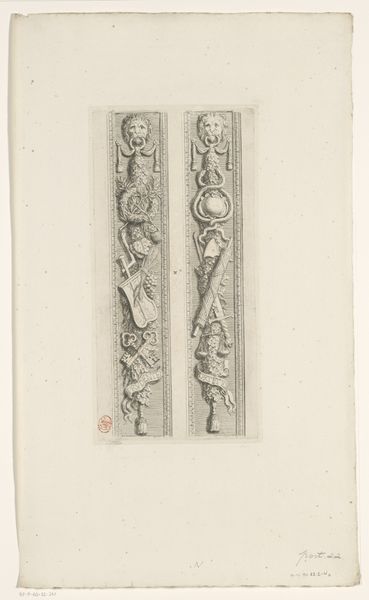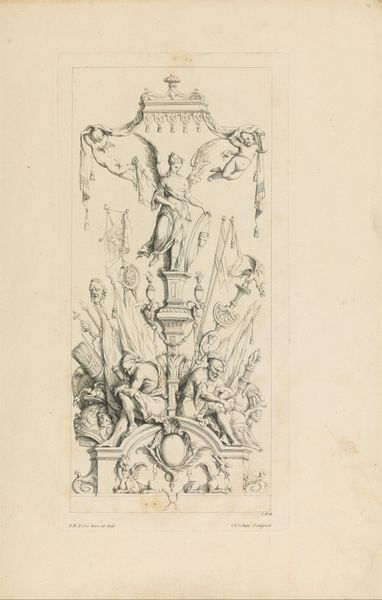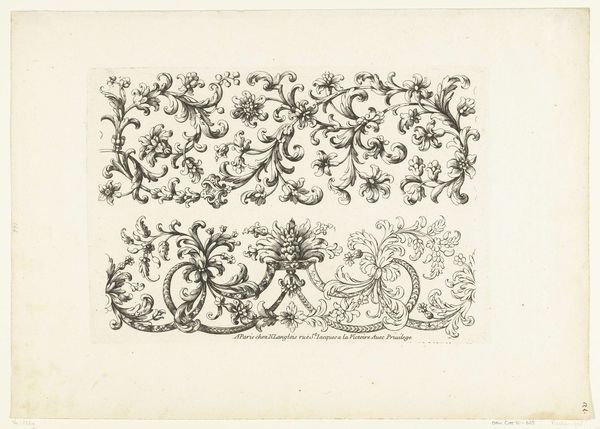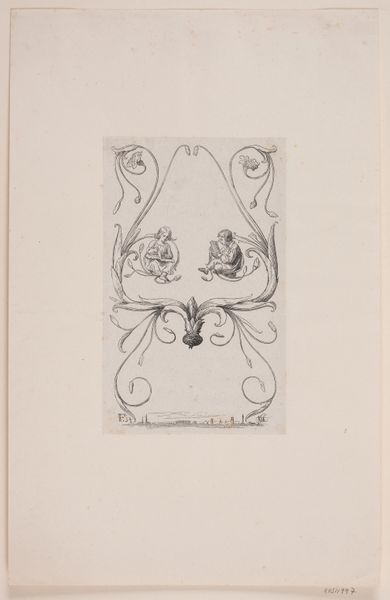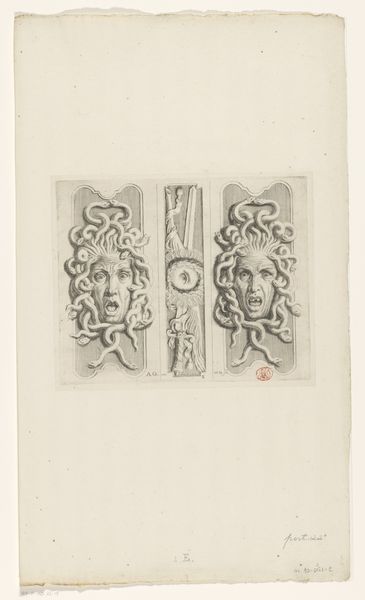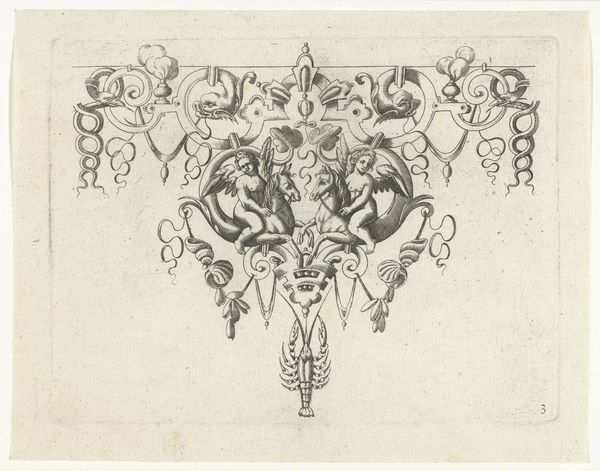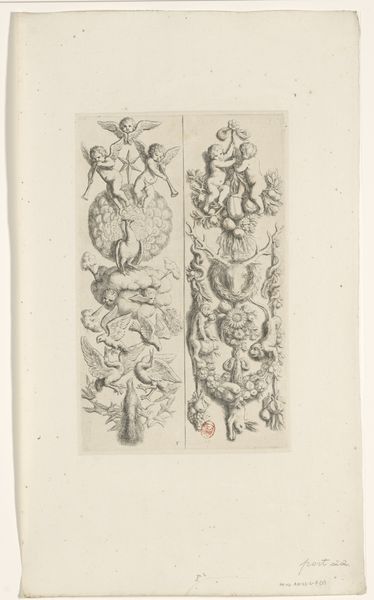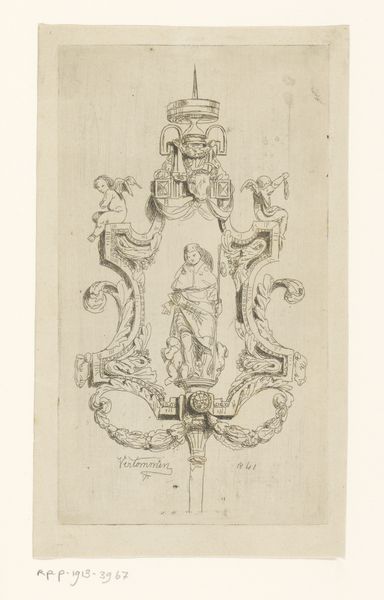
Drie pilasterfestoenen in de noordelijke galerij van het Stadhuis op de Dam 1655
0:00
0:00
drawing, print, ink, engraving
#
drawing
#
allegory
#
baroque
# print
#
pen sketch
#
old engraving style
#
ink
#
line
#
engraving
Dimensions: height 247 mm, width 151 mm
Copyright: Rijks Museum: Open Domain
Hubert Quellinus created this print, "Three Pilaster Festoons," sometime in the 17th century. It depicts sculpted decorations in Amsterdam's Town Hall. These pilasters, with their theatrical masks and sheaves of wheat, are more than just decoration; they're visual statements about Amsterdam's civic values. Carved into the city hall, they reflect Amsterdam's self-image as a center of trade and culture. Notice the masks of Comedy and Tragedy, signifying the city's vibrant theater scene and the prosperity brought by trade, symbolized by the wheat. Understanding this image involves looking at the economic and political context of the Dutch Golden Age. Amsterdam was a major mercantile power, and its town hall was designed to reflect that status. Prints like these circulated widely, shaping public perception of the city and its institutions. By studying architectural drawings, city records, and the writings of the time, we can better understand the values and aspirations embedded in this image and the institution it represents. Art always exists within a specific social and institutional framework.
Comments
No comments
Be the first to comment and join the conversation on the ultimate creative platform.
